The Google Accessibility Discovery Centre at St. Pancras in London is a facility in which engineers, researchers and disabled staff members at Google collaborate to test and build new kinds of assistive technologies.

In order to discover more for ourselves what the centre has to offer, a group of researchers from Rix Inclusive Research recently visited Google. The purpose of the visit was to gain insights into Google’s current research activities in the field of accessibility and to familiarise ourselves with the technological solutions available for enhancing accessibility and inclusivity.
On arrival at Google, we were escorted to the Discovery Centre, where we received a brief overview of the centre’s activities, its objectives, and its commitment to collaborative efforts to advance technology for the benefit of all. Upon entering the room, the attention is immediately drawn to the prominent ADC sign on the wall, which was designed by a group working at the centre.
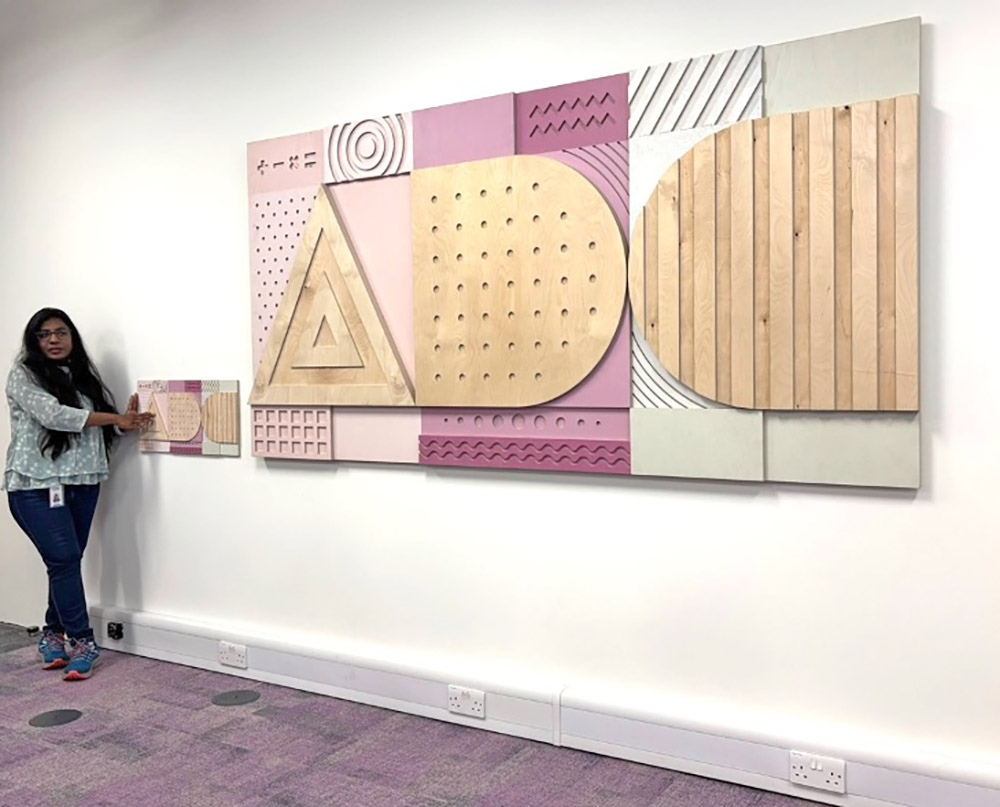
Whilst the primary focus of technological advancements pertained to addressing issues of sight and hearing impairment, there was also a notable emphasis on the development of technologies designed to assist individuals with intellectual disabilities.
The exhibition featured a range of intriguing assistive devices and artefacts, many of which focused on enhancing computer accessibility through novel physical devices. Noteworthy among the exhibits were Braille LEGO blocks, a braille-output generating machine, and numerous devices designed to enhance computer accessibility, including screen magnifiers, web video transcription tools, and input devices that facilitate use by individuals with low manual dexterity.
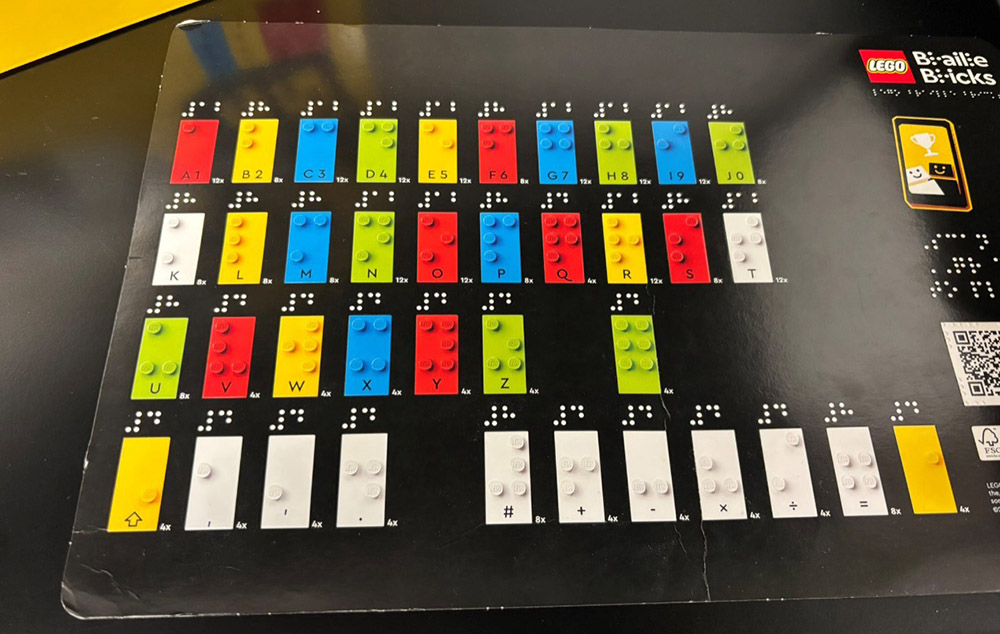
One of the items on show at the centre that stood out was a Braille ruler (although it didn’t really have any Braille on the ruler as such, just raised marks). The idea seemed to be that you place a drawing tool such as a pencil or pen into one of the notches in the ruler, which were 5mm apart, and this would help in locating the drawing tool if you have a visual impairment. This could also be beneficial for young people learning to make measurements, as it helps to locate the tip of the pencil or pen in the correct location, though only in increments of 5mm, so not highly accurate.
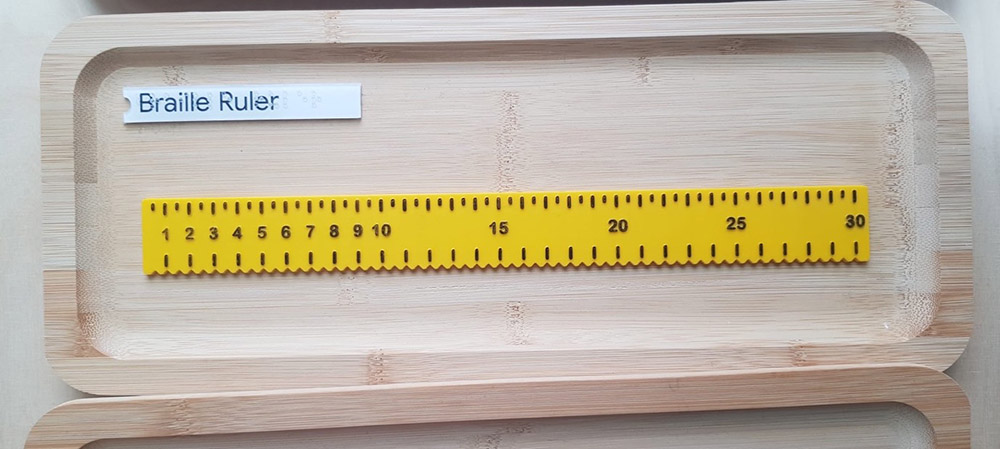
This idea was quite appealing, but it seemed to lack a little dynamism. A ruler with notches could assist in measurements, but what would have been really useful was some audible feedback, so that when you position the pen/pencil in the slot, it would tell you where you had placed the writing tool and at what distance. This prompted a new version – RixTalk, which you can read about on the Extra Sensory Objects website.
There were several games on display that had been adapted so that they were more inclusive, and used a variety of different methods to improve access. For example, the game shown below scored points by firing at a target, which was triggered by either using a large button placed on the desktop (demonstrated by Saul below), a spring input device (you flick it to trigger the input), or a large button on an arm (shown on the left below).
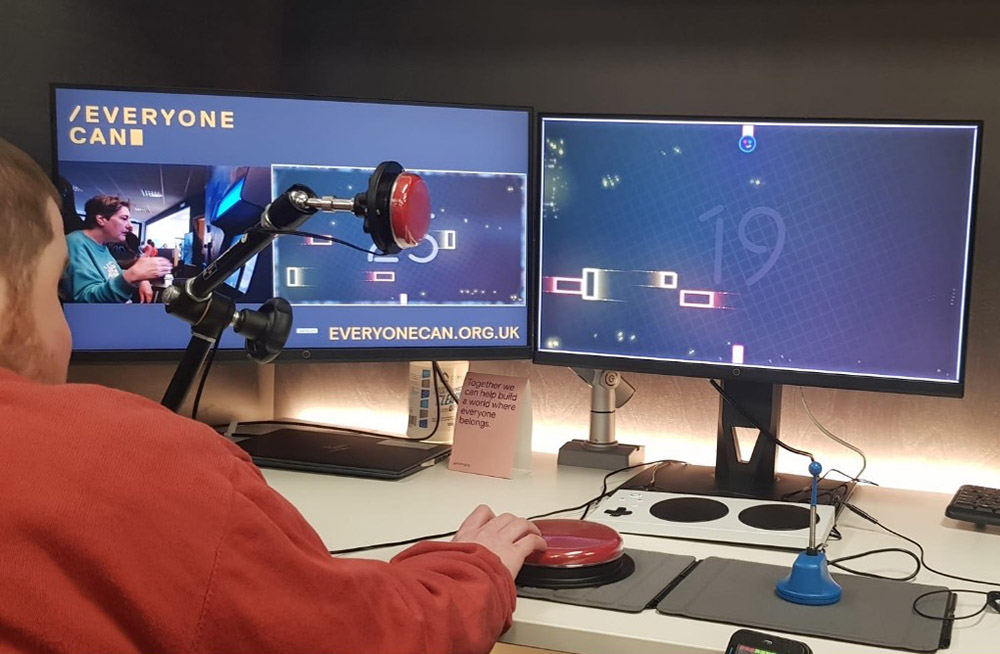
The visit is well worth the time, and provides plenty of food for thought. Even the naming of various departments on the different floors was captivating – a distinct Bowie theme, as you can see below:
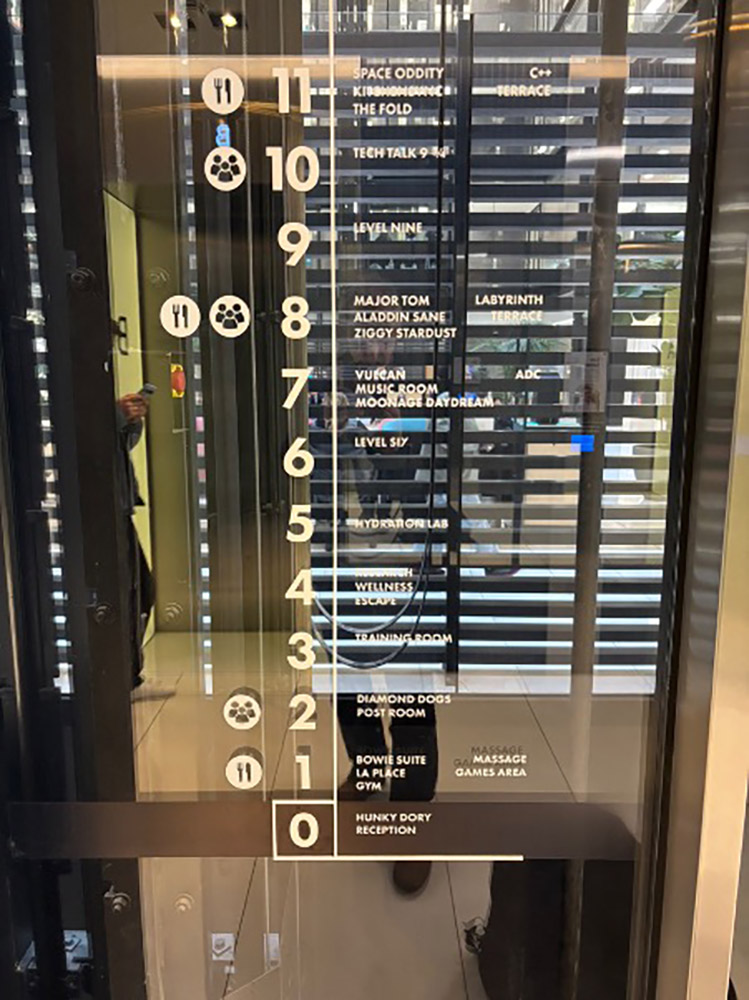
It was an interesting and inspiring visit, and at the end of the two hours we were allowed to relax in the lounge area and have a short debrief, which resulted in many ideas being generated…
Nic Hollinworth

